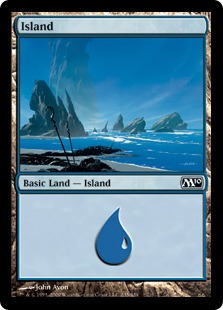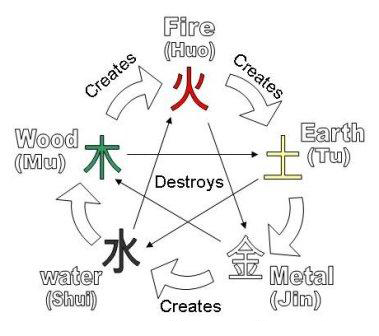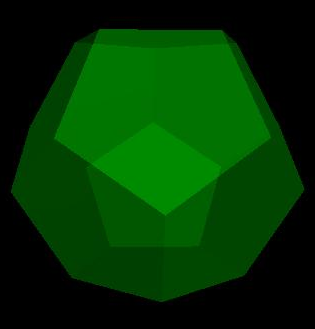In this third installment of Gathering the Magic, we will continue our odyssey of the analytic and synthetic perspectives offered by our favorite card game. There are many ways to view the world, and this month's article will demonstrate how to see it in color - more precisely in the five colors of Magic. Why don't you take a moment right now and think about these colors, both in terms of what they represent in the Magic universe and what they signal in our everyday world. Black and white - polar opposites, dualism, darkness and light, yin and yang, female and male. Red, blue and green - the fundamental colors swirling in a circle. Their qualities - passion, reason, joy. One can spend a great deal of time thinking of these things, if one is so inclined. Please do - I'm not going anywhere.

If you post on MTGS, you will no doubt have observed how some members describe their personality in terms of a Magic color in their signatures, as determined by this or that personality test. But if you know a little something about the colors of Magic and a little something about yourself, I'm sure you could have simply assigned a color just as accurately. Colors and symbols - the skull, the flame, the drop, the tree, the sun - speak to us at a fundamental level, a level hard to reach with mere words. For instance, isn't it fitting that Blue, the color of mind, thought and reason, bears as its symbol a drop of water? The very process of reflection brings to mind the mirror-like surface of a lake. The formation of distinct ideas from the meandering clouds of thought that pass incessantly across the consciousness bears resemblance to the formation of water drops. Or consider the word channel - originally denoting a pipe for liquid, but now universally used for all manners of conveying information.
There is a waterness to the mind just like there is a Blue-ness to certain people. And a Red-ness to others, something Hannes elaborates on in a recent article. And like the colors of Magic, some people mix better than others. Isn't it so that the lawful and orderly (white) tend to prefer the cerebral and intellectual (blue) to the brash and wild (red)? If this seems overly simplistic to you, feel free to do all manner of combinations. For example, the flavor text on the Odyssey eggs really capture the personality types that may arise when you combine allied colors in twos. Or you can go all out and consider what each color might represent in you - even if you find yourself to predominantly express one or a combination of the colors.
The way the five colors of Magic are ordered is a source of great wisdom for anyone interested in how one thing may relate to another - not just people. There is something fundamentally true about how the relationship between red and green is diametrically opposed to blue, for instance. Or how the sun and the tree taken together oppose the skull - the dynamic trinity of life, growth and death goes beyond the card game. Would it surprise you to know, that a several thousand year old philosophical system was based on five elements, very similar to the five colors of Magic and organized in a dynamic pentagram of opposing and supporting forces as well?
Feng Shui
First off, Feng Shui isn't interior decorating, just like Tantra isn't sex and the Tarot isn't fortune telling - that is simply what popular subculture has transformed it to for greater profit, as wisdom in itself has no consumer value. Feng Shui literally means Wind Water - thereby naming two of the eight trigrams forming the Ba Gua (literally: Eight Symbols), an important concept in Taoist philosophy, just like Yin and Yang. The names of the eight trigrams are Heaven, Marsh, Fire, Thunder, Wind, Water, Mountain, Earth - sound familiar?

With the three concepts Yin and Yang, the Wu Xing and the Ba Gua, we have really identified three perspectives. Yin and Yang looks at the world from a dualistic perspective, the Wu Xing (or the five colors of Magic) uses five principles, while the Ba Gua considers fully eight factors. Feng Shui, then, is the art of balancing these forces to obtain a harmonious whole - something you as a Magic player might actually have a hidden knack for, given your intimate understanding of the qualities of the five colors. Last month's article was exclusively devoted to the dynamic trinity, while the first one in the series approached the monistic and dualistic perspectives. Each perspective, from one to eight and more, can be applied to any object of interest, and reveal a wellspring of latent knowledge that you may not have guessed you had within you. I'll sum this process up at the end of the article, but today we are mainly concerned with the numbers four to eight. To explore this further, we turn to the elemental system of the West.

The classical elements are typically presented as four in number - earth, water, wind and fire. A fifth element is, as we shall see, implied by the four and often the object of some speculation in popular culture. But let us first examine the myriad ways in which the four elements manifest themselves. The four elements of alchemy is the foundation of modern chemistry, as seen for instance in the phases of matter - solid (earth), liquid (water), gas (wind) and plasma (fire). The kingdoms of classic biology follow the same patter - mineral (earth), plant (water), animal (air) and human (fire). But why, for instance, is the animal kingdom linked to air? Figuring this out might take some intellectual effort on your part. A lead is the word animal itself, meaning both breath and soul.
The elements signify temporal divisions as well: dawn (air), day (fire), dusk (earth) and night (water), or the four seasons spring (air), summer (fire), autumn (earth) and winter (water). This also includes the ages of man - such as "life's autumn", or even "the dawn of mankind". As we contemplate these things, a cycle presents itself, not unlike that of the Wu Xing or the five colors of Magic - the elements seem to be a sequence whether we consider them as phases of matter or periods of time. At the heart of this cycle lies the movement of the Sun - signifying gold in the alchemical system. Knowing this, we can link the cardinal points to the elements as well: the Sun rises in the East, moving skyward (air); it's hottest in the South where it reaches its highest point (fire); it sets in the West, seemingly engulfed by our planet (earth); and remains hidden in the cool of the night at its North-most point (water).
Just like the link between the elements and the movement of the Sun conjurs up the image of a circle, the four cardinal points imply a center or origo. West, North, East and South are not locations, but directions by which you can move from the point where you are now towards the horizon. Your location is, or rather - you, in person are - the origo, the central point of the solar circle. Now in alchemy, the "crude self" is represented by the metal lead. Ask anyone about alchemy and they will say that it's about making gold out of lead - they might also mention the so called Philosopher's Stone in relation to this. While a materialistic interpretation of history will thus depict alchemy as some medieval gold rush, the truth is that the higher purpose of alchemy was actually spiritual refinement. Thus, it's about transforming the lead of self to the gold of spirit - and the means to do this is the implied fifth element, the quintessence, the Philosopher's Stone. Gold as a symbol for holistic integration is also found in the golden, multi-colored cards of Magic, reminiscent of how white light contains all the colors within it.
So we have illustrated how a group of four, such as the cardinal directions or the seasons, imply a fifth member, and we've also mentioned the eight symbols of the Ba Gua. What about the numbers six and seven - how are they derived and what is their significance? In addition to moving in the four cardinal directions, it's also possible to move up and down. The "six" is thus a three times two - movement in either direction along the three dimensions of space: back and forth, side to side, up and down. And finally the seventh, most sacred direction: inward. Where the East has its Ba Gua, the West simply derives its eight-fold from the points between the four cardinal points. Their alchemical significance is easily grasped from combining the elements: NW (water + earth = moisture), NE (water + air = cold), SE (air + fire = dryness) and SW (fire + earth = warmth).
How many categories, concepts, archetypes etc. do we need? Moving further, we find that the nine is a trinity of trinities (a concept discussed at some length in the last article). The ten can be thought of as a double pentagram, and further investigation into the Wu Xing will in fact reveal how each element is based on proportions of the two forces of Yin and Yang. If you need more archetypes for your philosophical enquiries, look no further than the 22 Arcana of the Tarot or the symbolism in the 22 letters of the Hebrew alphabet. Or go crazy with the 108 Stars of Destiny of the Shui Hu Zhan - one of the four classical works of Chinese literature (though Three Kingdoms is without doubt the one Magic players are most familiar with).

The limitless perspectives offered as we move along the numerological axis can be quite overwhelming. But I've found that the first five go a long way in understanding the world. After all, the elements are just that - the basic, elementary and fundamental - the rest is a higher yoga that falls outside the scope of these introductory articles. Now, the five elements are not only represented in the colors of Magic, but also in gaming dice. The Platonic Solids are geometrical bodies that are unique in the fact that they are completely congruent, and yet another example of games esoterica as discussed previously on GtM. There are precisely five of them, and gamers across the world know them as the d4, d6 (or regular dice), d8, d12 and d20. Less known is the fact that the tetrahedron represents Fire, the cube Earth, the octahedron Air, the dodecahedron the Quintessence and the icosahedron Water. Imagine that - the d12 you held in your hand was the Philosopher's Stone all along. Or at least something like a map to help you find it.
I mostly use the perspective of the five phases when thinking about development of all kinds, whether the psychological development of an individual, the moral development of a society, the stages of a project, etc. Philosophers like Ken Wilber adopt a similar approach in attempts to revisit the ancient wisdom of the elements while presenting them in a form that makes them available to the modern man. In an effort to sum up the philosophical perspectives covered in these three articles, I will now briefly sketch the five colors of Magic as developmental stages and analytical perspectives, linking them to what we've discussed so far.
I - Green
The green light, composed of blue and yellow, indicate conception, unity and birth. This is the stage represented by the growing child, that has not yet become an individual. Though the umbilical chord may be cut, mother and child remain the same in essence. Green thus represents a sort of immature femininity, where everything is one with Mother Nature. Here we find wonder - the first intellectual principle - as characterized by the didactic questions: What? Why? When? Where? How? As these questions begin to characterize the unity, we also learn what "this" is and what "this" is not. And that brings us to the next stage.
II - Red
The red light is that of the teenage rebellion, the process of individualization - of finding out what one is by settling what one is not. It's the color of anger, rage, and immature masculinity. There is a tension of opposites, the ego and the world, the male and the female, the positive and the negative - as well as the lightning discharges appearing between the two. This is the philosophical standpoint of dualism and irreconcilable differences. Some stay teenagers most of their lives, but eventually most get sick and tired of their rage and transform this force into something constructive.
III - Blue
Then comes the civilized blue light of reflection, education, and society - the laws that Man makes for himself. One has made up one's mind, formed an opinion, thought things through. Here we find the impulse to settle down and raise a family - create a world of one's own. It's the color of synthesis and philosophy, of mature femininity. Synthesis rises above the petty squabble of the thesis and antithesis, becoming the higher alternative to getting stuck in dualistic analysis and false dilemmas. It is the color of quality over quantity and mind over matter. But eventually, people tend to get bored even with their own worlds. So where the teenager rebelled against society, only to create it himself, the middle life crisis is about rebelling against yourself. You may buy sports cars, cheat on your partner, get drunk or whatever to try and put it off, but it's inevitable. You gaze into the Abyss, and the Abyss gazes into you.
IV - Black
Death. Comes. Closer. "What have I become, my sweetest friend?" You look back at the vanity, the society you've helped create, the empire of dirt. And you say, "Enough!" The office is out and Fight Club is in! "Our war is a spiritual war, our great depression is our lives." This is mature masculinity. The free man has emancipated himself from the laws of society, the opinions of others - even his own opinions do not bind him anymore. He knows that he is going to die. He lives in that knowledge, every day. He plunges into the dark sea of the Abyss, since he deems all resistance futile. This is a dangerous place to be in if the process is rushed on, for instance by a cheering crowd. Many of the great men of our history have become tyrants when the shackles of society came loose. Others have regressed into a form of anarchy not unlike the second stage all over again. But a few have kept going.
V - White
There is light within darkness. In pitch black darkness, we can't perceive the light for lack of a surface to reflect it (such as the moon) - yet the spacial void is overflooded with white light. The white light holds all colors in its embrace. This is Da'at. The integrated human being has mastered all the previous stages, and can switch between them freely. He can follow the law - not because he needs to follow it, but because it needs to be followed. She can be a rebel - not to become legendary, but because humanity needs a legend. The white mage is a mahatma, like Gandhi, meaning great soul. A champion of the elements and their Balance.
Dear reader, over the course of three articles, we have explored how Magic can be used to view phenomena as a didactic whole, an analytical duality, a synthetic trinity, an elemental cross, and a harmonic pentagram. These perspectives will now continue to serve the purpose of the future articles, which will be detailed meditations on individual cards. We will contemplate the artwork and inner meaning of a select few each article. If this prospect intrigues you, feel free to suggest cards in the commentaries.
Comments